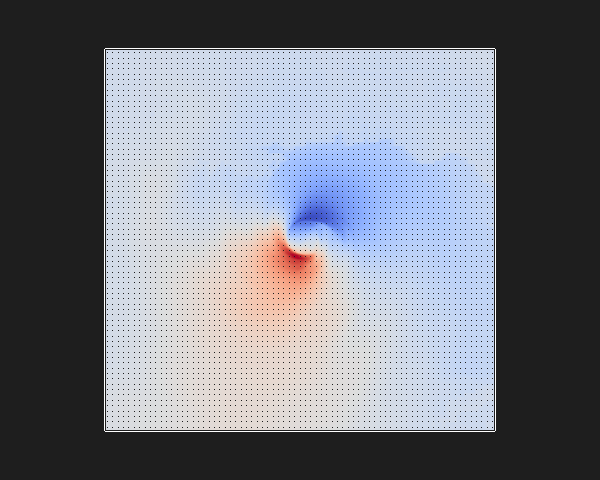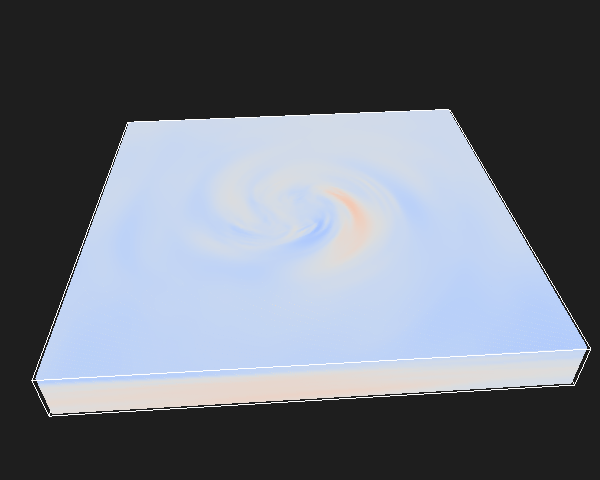While it is recommended to import data into Vapor using session.LoadDataset(), Vapor also supports importing data from XArray datasets.
The following cell will download sample data from NCAR’s Research Data Archives.
import os
import requests
import zipfile
url = 'https://data.rda.ucar.edu/ds897.7/Katrina.zip'
extract_to = './data'
zip_name = "Katrina.zip"
data_file = './data/wrfout_d02_2005-08-29_02.nc'
# Check if the data file already exists
if not os.path.exists(data_file):
# Download zip
with requests.get(url, stream=True) as r:
r.raise_for_status()
with open(zip_name, 'wb') as f:
for chunk in r.iter_content(chunk_size=8192):
f.write(chunk)
# Extract the file
with zipfile.ZipFile(zip_name, 'r') as zip_ref:
zip_ref.extractall(extract_to)
# Clean up the zip file
os.remove(zip_name)
print(f"Data downloaded and extracted to {data_file}")
else:
print(f"Data file already exists at {data_file}, skipping download and extraction.")
Data file already exists at ./data/wrfout_d02_2005-08-29_02.nc, skipping download and extraction.
In order to pass XArray data to Vapor, create a data set within your vapor session using Session.CreatePythonDataset().
from vapor import session, renderer, dataset, camera
import xarray as xr
ses = session.Session()
data = ses.CreatePythonDataset()Vapor 3.10.0
Python 3.9.19 (/opt/anaconda3/envs/vapor)
OpenGL 4.1 Metal - 89.3
First we will load the dataset with XArray
ds = xr.open_dataset("data/wrfout_d02_2005-08-29_02.nc")
dsWe can add variables from our XArray dataset to our Vapor dataset using dataset.AddXarrayDataset(). We should be careful though -- once the data is loaded with XArray, Vapor cannot determine if a dimension is spatial or temporal. Because of this, we should make sure the data array we pass contains only spatial dimensions.
U10 = ds["U10"]
U10In this case, U10 should be a two dimensional variable (longitude and latitude). But notice that in the DataArray we just created we still have a time dimension. Because of this, Vapor will incorrectly treat it as a 3 dimensional variable. Before passing the DataArray to Vapor, we should remove the temporal dimension.
U10 = ds["U10"].squeeze("Time")
U10Now, we can add this variable to our Vapor dataset with dataset.AddXArrayData(). The first parameter will be the variable name that we want to appear in our Vapor dataset, while the second parameter is the XArray DataArray.
data.AddXArrayData("U10", U10)Now, we can render our data using any of Vapor’s renderers.
# Create a renderer for the data
ren = data.NewRenderer(renderer.WireFrameRenderer)
ren.SetVariableName("U10")# Show the rendering
ses.GetCamera().ViewAll()
ses.Show()
ses.DeleteRenderer(ren)The same process can be used to render a 3D variable
data.AddXArrayData("U", ds["U"].squeeze("Time"))ren = data.NewRenderer(renderer.WireFrameRenderer)
ren.SetVariableName("U")
ses.GetCamera().LookAt([ 138.64364963, -213.94716727, 293.46022828],
[157., 154., 0.],
[0.04815987, 0.62133843, 0.78206086])ses.Show()